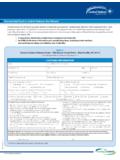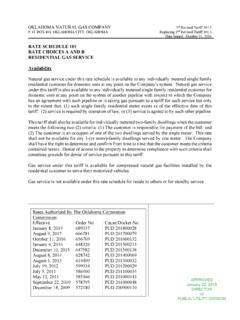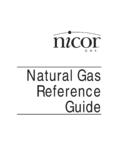Transcription of Energy in Peru: Opportunities and Challenges - AS/COA
1 NEW YORK. 680 PARK AVENUE. NEW YORK, NY 10065. PHONE FA X WASHINGTON. 1615 L STREET NW, SUITE 250. WASHINGTON, DC 20036. PHONE FA X MIAMI. 2655 LEJEUNE ROAD, 5TH FLOOR. CORAL GABLES, FL 33134. PHONE FA X Energy in peru : Opportunities and Challenges Uniting opinion leaders to exchange ideas and create solutions to the Challenges of the Americas today. A Working Paper of the Americas Society/Council of the Americas Energy Action Group Energy in peru : Opportunities and Challenges A Working Paper of the Americas Society/Council of the Americas Energy Action Group 1.
2 AMERICAS SOCIET Y/COUNCIL OF THE AMERICAS. Written by Nicole Spencer Published by Americas Society and Council of the Americas Washington DC. June 2010. 2. Energy in peru : Opportunities AND Challenges . INTRODUCTION 4. BRIEF HISTORY OF OIL AND GAS in peru 6. Opportunities AND Challenges 8. natural Gas Environmental and Indigenous Issues RECOMMENDATIONS 14. Peru Should Ensure a Long-Term Commitment to a Market Friendly Investment Climate for Energy Development Peru Should Strive to Become a Model for Environmental and Social Management Peru Should Continue to Ensure Its Domestic Market Benefits from natural Gas Peru Should Seek to Further Regional Energy Cooperation as a Means to Strengthen Political and Economic Relations Peru Should Take Advantage of Its Location on the Pacific to Pursue Export Markets for LNG in Asia CONCLUSION 15.
3 3. AMERICAS SOCIET Y/COUNCIL OF THE AMERICAS. INTRODUCTION. Once an oil exporter, Peru became a net importer in the late 1980s/early 1990s. The combination of a state-dominated turn in peru 's Energy sector in the 1960s and a lack of significant discoveries over the years set Peru on a path of dwindling reserves. Royal Dutch Shell's 1980s discovery of natural gas near the Camisea River in the Amazon eventually changed Peru's fortunes, but it would take about 20 years to bring this gas to market. In that time, Peru essentially reversed its approach to Energy , implementing market friendly reforms that attracted the investors neces- sary to develop its resources.
4 As a result of smarter Energy management, Peru has now begun to diversify its Energy use, reduce its dependence on imports, and position itself as an exporter of As a result of smarter Energy manage- liquefied natural gas (LNG). Still, ment, Peru has now begun to diversify Challenges remain, particularly as its Energy use, reduce its dependence exploration and development on imports, and position itself as an activities in environmentally and exporter of liquefied natural gas. socially sensitive areas increase. This working paper explores the transformation of Peru's oil and gas sector from an industry in decline to a major contributor to economic growth in peru .
5 It begins with a brief history of oil and gas in peru , including the important hydrocarbon reforms of the early 1990s and the development of the Camisea natural gas fields. The paper then focuses on the benefits of natural gas to Peru and the need to balance oil and gas development with environmental and social protections. Finally, the paper makes several recommendations based on Peru's experience but intended for broader hemispheric consideration. These recommendations are drawn in part from a high-level meeting the Americas Society/Council of the Americas Energy Action Group held in Lima, Peru, on November 2, 2009.
6 The meeting brought together senior representatives from the public and private sectors for a discussion of Energy and climate issues in peru and the Andean region. 4. Energy in peru : Opportunities AND Challenges . Briefly, the recommendations are as follows: 1. Peru should ensure a long-term commitment to market friendly policies for Energy development. Candidates for the 2011 presidential election should pledge to maintain a favorable investment climate as well as stringent environmental and social standards. 2. The reforms that have made Peru attractive to oil and gas investors have also challenged Peru's ability to monitor and enforce environmental and social standards.
7 Peru should use this as an opportunity to become a model for the region in environmental and social management. 3. Peru should continue to ensure its domestic market benefits from natural gas produced locally, including using natural gas to provide electricity to people without access to modern Energy services. 4. Peru should seek to further regional Energy cooperation as a means to strengthen political and economic relations with its neighbors. 5. To the extent that proven reserves of natural gas and domestic consumption needs allow for exports of LNG, and barring the possibility of supplying other Latin American countries, Peru should take advantage of its location on the Pacific coast to target Asian markets.
8 5. AMERICAS SOCIET Y/COUNCIL OF THE AMERICAS. BRIEF HISTORY OF OIL AND GAS in peru . Oil dominated the hydrocarbon sector in peru for most of the twentieth Oil development in peru dates back to the mid-nineteenth century, but it was not until the early 1900s that it began to take off. By 1929, oil made up 30 percent of Peru's export revenues. But beginning in the 1940s, failed exploration efforts and political interference (such as policies that changed from government to government, refusal by various governments to grant new concessions, and fixed petroleum prices) left Peru with a trend of diminishing reserves and production.
9 In response to increasingly unfavorable policies governing the sector, private investment waned. In 1968, the military dictatorship expropriated the International Petroleum Company, a major presence in peru at that time, and created state oil company Petroperu. For nearly 25 years, Petroperu controlled all Failed exploration efforts and political aspects of Peru's oil and gas industry. interference left Peru with a trend of Even though Petroperu sought the diminishing reserves and production. participation of private companies in exploration and production, only a few firms remained in peru during this time.
10 After years of industry decline, Peru became a net importer of oil in the late 1980s/early 1990s. Heavy state intervention in the Energy sector mirrored the role of the state in the rest of the economy during the latter part of the twentieth century. After decades of low economic growth, Peru's economy worsened in the second half of the 1980s. Real wages fell by almost half, accompanied by hyperinflation and huge deficits. In 1990, political outsider Alberto Fujimori won the presidency and used shock measures to stabilize the economy.






